AUCTORES
Globalize your Research
Research Article | DOI: https://doi.org/10.31579/2690-4861/331
Dissertation presented to the University Federal of São Paulo, Brazil.
*Corresponding Author: Alisson Martins Granja Cavalcanti., Dissertation presented to the University Federal of São Paulo, Brazil.
Citation: Granja Cavalcanti AM, Renato Saints, Hector Francisco, (2023), Model in Orthesis in Elbow for Rehabilitation in Rigidity Articulate, International Journal of Clinical Case Reports and Reviews, 14(5); DOI:10.31579/2690-4861/331
Copyright: © 2023, Alisson Martins Granja Cavalcanti. This is an open-access article distributed under the terms of the Creative Commons Attribution License, which permits unrestricted use, distribution, and reproduction in any medium, provided the original author and source are credited.
Received: 04 August 2023 | Accepted: 06 October 2023 | Published: 23 October 2023
Keywords: robert uterus; septate uterus; endometrioma; dysmenorrhoea and infertility
Introduction: Joint stiffness is the most common complication in elbow injuries and may have several etiologies and pathophysiological mechanisms, affecting treatment and prognosis. The measures for prevention and treatment of joint contracture are based on the cause of stiffness, and early intervention should modify the course of this complication, bringing better results; Such methods may be conservative or surgical, isolated or combined, depending on each individual situation.
Objective: To develop a device for use by patients in rehabilitation of elbow injuries.
Method: The development of the device was approached through "Design Thinking", divided into four phases: "Discover", "Define", "Develop" and "Deliver". In the “Discover” phase, interviews were conducted with patients with elbow joint stiffness and professionals about the problem. Literature review and search for anteriority data collection was performed. In the “Define” stage, the anomaly to be included in the study was determined. In the stage “Develop”, search was held for ideas and prototypes and models. “Brainstorming” meetings on the topic were scheduled. In the “Deliver” stage, adjustments and refinements and prototype production were performed, as well as testing for improvements and corrections to the project. Results: In the "Discover" phase, collected questionnaire responses from patients. In the "Define" phase, it was established that joint stiffness was the complaint to be treated. In the “Develop” phase, answers were collected from the questionnaires of the professional groups and “brainstorming” was performed among these collaborators. In the "Deliver" phase, creation of the virtual orthotic model ready for three-dimensional printing.
Conclusion: A device was developed for individualized use and management, molded to each patient, to be used in the rehabilitation of elbow joint injuries.
ABS Acrylonitrile butadiene styrene
ADM Range in moves
AM Additive manufacturing
AVD Atividade da vida diária
CAD Computer Aided Design
CAE Computer Aided Engineering
CAM Computer Aided Manufacturing
CINAHL Cumulative Index to Nursing and Allied Health Literature
CIP Classificação Internacional de Patente
COM Continuous Passive Motion
DT Design Thinking ESPACENET European Patent Office FDM Fused Deposition Modeling
GSC Geometry solid constructive
INPI Institute National from the Property Industrial
LILACS Literature Latin American It is of caribbean in Sciences from the Health
LOM Laminated object Manufacturing
MESH Medical Subject Headings
Minimum MVP viable Product
PETG Polyethylene terephthalate glycol
PLA Acid polylactic
RPT Rapid Prototyping Technology
SBOT Company Brazilian in Orthopedics It is Traumatology
SBCOC Title at Society Brazilian in Surgery of Shoulder It is Elbow
SIPO State Intellectual Property office
Selective SLS Laser sintering
SPS Static Progressive Stretch
SUS System Single in Health
TCLE Term in Consent Free It is Enlightened
UNIFESP University Federal in They are Paul
USPTO United States Patent and Trademark Office
WIPO World Intellectual Property Organization
3D Tridimensional
A rigidity articulate It is the complication more frequent of illnesses joints at the elbow, being able to have miscellaneous etiologies It is mechanisms pathophysiology, affecting treatment and prognosis (LINDENHOVIUS & JUPITER, 2007; CHARALAMBOUS & MORREY, 2012; STANLEY, 2015).
Intrinsic or extrinsic injuries of the elbow It is factors as: age of patient, illnesses inflammatory, infectious or degenerative diseases, hemophilic diseases, trauma, burns, time in immobilization (associated or no the intervention surgical), ossification heterotopic, tumors, illnesses neurological It is congenital (LINDENHOVIUS & JUPITER, 2007).
Measures for the prevention and treatment of joint contracture are based on the cause of the stiffness, and early intervention should modify the course of that complication, bringing best results. Such methods used may be conservative or surgical, isolated or combined, the to depend decade individualized situation (SOCHOL et al., 2019).
O surgeon orthopedic he must be attentive not only the quality from the technique surgery to be used, providing precocious mobility to the post operated, as well as prioritizing rehabilitation of excellence, making use of in instruments what help the team at the treatment of miscellaneous infirmities. You can include the use of CPM (Continuous Passive Motion) and articulated orthoses as adjuvants in the process that, being well maids, It is in form early, will promote maintenance of gain from moves obtained in procedures surgical It is will minimize to the contracts articular (EVANS and al., 2009; Charalambous & MORREY, 2012).
The relevance of using an articulated orthosis in post-operative follow-up operation resides in the stretching and maintenance of the amplitude gain soft tissue joint (capsular, ligamentous, and tendinous structures) in all phases of treatment (SODHI et al., 2019).
O program in immobilization should to be continued, with average in three to four months after surgery, but its duration is variable in relation to the lesion complexity and response to treatment. the amount of time spent at the stretching of elbow in flexion It is extension, he must to be proportional the gravity from the stiffness in each direction: patients with flexion contracture should spend more time stretching in extension and vice versa (SANCHEZ-SOTELO et al., 2018).
In orthopedic practice, the common use of splints is observed. plastered or orthoses no articulated in postoperative in surgeries orthopedic, per period in time variable, aiming protection of surgical procedure performed. However, this method of immobilization hurts the principle that every joint must have early mobility, not being indicated absolute rest of the limb. The experts are in front of injuries complex capsuloligamentous, fractures serious It is unstable, deficiency of bone stock that generates fragility of osteosynthesis or arthroplasty. Therefore, there is a need for additional protection extrinsic after fixation surgical, or same after lesion what no need in approach invasive (SMITH & MORREY, 2009).
In between to the orthoses indicated for rehabilitation in injuries in elbow they are the articulated ones, in great superiority over the non-articulated ones, being difference basic what to the first allow O movement articulate. subdividing to the orthoses articulated, have each other to the static It is to the dynamics.
Static orthoses: allow the greatest tolerated stretching, sometimes in flexion maximum, now in extension maximum, in position constant (McCLURE et al., 1994). Dynamic orthoses: are securely adjustable and graduated to what no there is pain or instability, allowed charge constant in stretch (CHARALAMBOUS & MORREY, 2012). Progressive static orthoses: they are static with increment additional in strength, allowed adjustment at joint position (McCLURE et al., 1994).
There are several examples of orthoses produced worldwide, largely in developed countries. In Brazil, there is very little diffusion of the models used for rehabilitation, mainly us services public, whether due to high taxation, high cost, difficult access to low-income patients’ income, precarious recommendation in doctors’ experts or from the team in rehabilitation, poverty in knowledge technician about of subject, deficiency defined protocols or even the need to import products from others locations (MAGALHAES et al., 2001).
A leave from the need in obtaining in best results It is in form precocious, it is being stimulated O use in orthoses articulated at practice orthopedic, being important instrument in aid at rehabilitation in injuries simple or complex, aiming The protection articulate without lose The mobility, generating security to surgeon, The team in rehabilitation It is effects positives to the own patient, so much at the control painful, functionality precocious of member, as also acting in benefit psychic of operated, items no offered by orthoses traditional. O job from the three-dimensional technology combines its own customization qualities, low cost, production in scale It is reproducibility to the principle’s rehabilitators of articulated orthoses.
To create model in bracing articulated in elbow for the method in print 3D The to be used at injury rehabilitation.
TUCKER et al., (1978) referred to a causal relationship between the anatomy of soft tissues around the elbow joint and post-traumatic stiffness, existing several possibilities in emergence, as incongruity articulate, bone blockages, degenerative changes, ligament tissue damage or capsular. Arthrography examinations were performed in twelve patients, at the interval in four months The three years for clarify the etiology disabling. found contractures from the capsule previous in nine patients, in two the capsule he was normal It is in one occurred stiffness, probably from bone loss. They observed that capsular contracture is the cause more frequent us patients’ carriers in elbow hard evidenced in radiological technique contrasted.
AKESON et al., (1980) reviewed knowledge of the effects of immobility of tissue connective fibrous It is outlined theories about the pathogenesis from the contracture articulate. One model experimental he was developed to assess the soft tissue response to immobility in laboratory. The hind limbs of dogs and rabbits had their knees blocked in flexion per fixation internal per until nine weeks, it is your fabrics periarticular connective tissues were examined immediately after death painless, using device called arthrograph, being measurements to the angular deformations with torque. There were changes in the composition of the connective tissue, such as reduced synthesis of hyaluronic acid, reduced of content of the glycosaminoglycans, increase in Connections crusades It is changes in the fibers of collagen. concluded what bones, muscles It is Cartilages are not only affected by disuse, but the fibrous structures of periarticular connective tissue are functionally disturbed.
ZANDER et al., (1992) reported success in reversing three cases contracture in elbow flexion, using the technique of serial splints made in fiber in glass until purchase amplitude in moves (ADM) satisfactory. From then on, a thermoplastic spigot was used in extension to maintenance. The mean flexion deformity was 44°, present for about in six months. O treatment consisted in methods traditional in stretching for to obtain the elasticity initial of tissue, followed in application of cylindrical fiberglass in the maximum extension position of the elbow. A splint he was used per three the five days, after removed, it is all O process was repeated until the orthosis was placed in extension for two to three weeks during the day and subsequently six to eight weeks at night. He was reduction in the mean flexion contracture of thirty-seven degrees was achieved. You results indicate that O use of models in series It is technique worthy in consideration in the treatment of contractures in elbow flexion.
BONUTTI et al., (1994) studied O device SPS (Static Progressive Stretch) adding the principle of stress relaxation, through of stretching It is deformation plastic for restoration from the amplitude in movements. One loss in moves of elbow he can to occur due the contractures post-traumatic, postoperative, adhesions, immobilization, cerebral palsy and stroke. Functional restoration can be difficult. because of the proximity of musculature, joint congruence and soft tissue vulnerability. The orthosis was indicated for patients who decreased movement after post-traumatic contractures, as well as after surgery and immobilization. The aim of this study was to evaluate the efficiency from the therapy SPS driven to the patient at the treatment in rigidity articulate. Patients used the device in treatment protocols for thirty to sixty minutes a day, for a period of one to three months. Twenty patients with elbow contracted what had success limited with others modalities therapeutic, including fixed assets serials, splints dynamics, motor physiotherapy and surgery were submitted to the SPS. There was increase in movement average in 31st (69%). All you patients expressed satisfaction, without complications and none showed deficit of ADM during O follow-up on one year.
GELINAS et al., (2000) evaluated the effectiveness of the “turnbuckle” orthosis what uses O principle in immobilization static progressive us patients what presented failure of treatment conservative. They were evaluated twenty It is two patients (fifteen women and seven men), mean age of thirty-nine years, treaties in between 1992 It is 1995. They were excluded those ones with joint incongruence or heterotopic ossification. The average range of flexion before from the splint he was in 32 ± 10th to 108 ± 19th It is 26 ± 10th (P = 0.02) to 127
± 12th (P = 0.0001), with interval in follow-up in 4.5 ± 1.8 months. O mechanism described of device It is O relaxation in charge, what occurs when one tissue contracted It is stretched out, creating like this charge what if dispels to the faraway of time, causing response biological what allows modification permanent of the fabrics. You patients won "bow functional in movement", defined as, for the any less, 100° in admin, demonstrating to be treatment safe It is effective what he must to be considered in patients’ carriers in elbows contracted what no replied to the treatment physiotherapy.
CHARALAMBOUS & MORREY (2012) performed article in revision on the molecular pathogenesis of stiff elbow, its presentation and means assessment, and reported results in open surgery techniques and arthroscopic. reported what your gadgets used for to improve O movement can be dynamic, static or progressive static. splints dynamics have an adjustable spring that exerts a constant stretch load, adjusted to the extent that does not produce pain. In static, the maximum load tolerated comfortably It is applied. A splint dynamic It is based at fluency (increase in length with application of constant load for time prolonged) and in progressive static splints relaxation of the stress (reduction from the charge necessary for to maintain right length). Successful results have been reported in both. fixed assets static progressive they are favorites because they are better tolerated, he has shorter periods of use and may increase complacency. The use of orthoses dynamics immediately after the lesion initial or surgery, he can cause greater swelling and lead to the risk of definitive injury. The exact protocol for bracing is based on the degree of contracture, splint tolerance, circumstances personal, compliance and rate of correction deformity.
MULLER et al., (2013) performed meta-analysis It is revision systematic in thirteen studies about the efficiency from the bracing at the treatment from the restriction from the mobility no bony of elbow. O goal he was to analyze O use of the static, dynamic or progressive static appliances in the treatment of injuries in parts soft later the trauma or surgery what caused stiffness articulate. All clinical studies using dynamic bracing were included. or static in patients with elbow stiffness. The eligible results were changes in amplitude total of movement (flexion It is extension), sustainability of the results It is complications. They were included thirteen studies eligible, providing data about 14 groups treaties in 247 patients. The mean age was 34.5 ± 10.4 years, females represented 46% ± 12%. A duration average since O incident until O start of appliance treatment was 6.9 ± 5.1 months. The improvement in ROM was of 38.4 ± 8.9 (95% confidence interval, 39.5° to 41.8°). there was no difference at comparison in between bracing dynamics, static or static- progressive, however the authors recommended the use of the static- progressive three times in thirty minutes to the day in each direction as first-line treatment of stiff elbow without evidence of restriction or ossification periarticular.
GALLUTTI et al., (2014) evaluated, retrospectively, O treatment stiff elbow with the use of dynamic orthoses. 30 were included patients with ROM equal to or less than one hundred degrees and stable articulation and congruent without heterotopic ossification. The device was used in average, 78 days after the trauma, for an approximate period of 75 days, in the failure of rehabilitation programs. The mean ROM before treatment was 68°, between 109° to 41° with a gain of 37° after using the equipment, varying in between 126th The 21st, getting displacement constant It is strength variable, modifying and stretching the collagen fibers. The average follow-up was twenty-three months. Ten patients did not recover functional mobility. Twenty-three patients were satisfied with the treatment and seven were dissatisfied. The results suggest that dynamic orthoses are useful in the stiff elbow treatment. Average arch improvement of 37° was achieved in movement, what became the unnecessary arthrolysis in many cases.
Kim et al., (2018) developed one bracing personalized in fish, using scanner and 3D printer and evaluated its effect in the treatment of patients with localized pain in the wrist due to overuse syndrome articulation. They were evaluated in one rehearsal clinical prospective randomized, twenty-two patients, divided into eleven in the control group who used a ready-made orthosis, of the Spectra wrist bracket type, and eleven in the experimental group that used 3D printed orthosis for a week and evaluated after application. Significant pain relief was found in both your groups, without difference statistic (P = 0.109), It is scores in high levels of satisfaction, but with a statistically significant difference in the group experimental (P = 0.036 It is 0.004). concluded what the bracing printed in 3D was superior in satisfaction scores to the control orthosis and similar in improvement pain of fish.
BARRIOS-MURIEL et al., (2019) carried out a technological review about advances at manufacturing in orthoses It is prostheses. They were analyzed different additive manufacturing methodologies, along with key methods in collect in shapes 3D It is your application at manufacture in devices functional for rehabilitation purposes. Design tools aided by computer (CAD), engineering aided per computer (CAE) It is computer-aided manufacturing (CAM), prototyping technologies (RPT), techniques such as melt deposition modeling (FDM), selective laser sintering (SLS), laminated object manufacturing (LOM) It is print 3D they are some examples of methodologies available at industry in transformation. O use of RPT It is others modalities in print 3D represents an alternative for the orthoprosthetic industry. The aim is to accelerate the process in reconstruction in models anatomical in 3D for design orthoses. A application of these technologies he can cause improvement significant in the orthosis manufacturing process. They concluded that RPT contributes at optimization of process in manufacture, in addition in to improve design and functionality of the orthopedic devices.
WOJCIECHOWSKI et al., (2020) performed revision systematic for determine the feasibility of designing, manufacturing and delivering ankle-to-foot orthoses foot, printed three-dimensionally. used bases in data electronics in January in 1985 The June in 2018, employing terms related the print 3D It is orthoses ankle-foot, under any technique in print 3D, related the capacity in locomotion, function biomechanics, properties mechanics, comfort of patient, pain It is inability. Found 11 studies who met the eligibility criteria. 3D printing was used for replicate orthoses ankle-foot traditional It is to develop new designs for optimize properties in stiffness or reduce Weight It is to improve the ease of its use. Customized, 3D-printed orthoses have been found to be comparable to traditional custom orthoses and prefabricated orthoses carbon fiber or other material, in terms of mechanical rigidity, kinematics and energy dissipation. They concluded that manufacture of orthoses ankle-foot he can to have benefits potentials in relationship The methods traditional, including projects what optimize rigidity It is dissipation in energy, improve the biomechanics to wander, comfort It is adjustment of device.
4.1 drawing of Study
It is a prospective, primary and developed in the Course of Master's degree Professional in Science, Technology It is Management Applied the Regeneration Tissue from the University Federal in They are Paul (UNIFESP).
it was treated in project belonging the UNIFESP, accomplished through of the concepts of Design Thinking, containing four phases of method double Diamond: discover, to define, to develop It is delivered, produced in form virtually entirely. Steps that needed collaborators: 1- Phase Discover of Design Thinking: contact with patients included at the project via email, Letter invitation It is quiz individual, through from the tool Google Forms.
3-Develop Phase of Design Thinking: contact with professionals included at the project, via email, Letter invitation It is quiz individual through from the tool Google Forms. Also, he was accomplished brainstorming, per conference call, live.
Second It is fourth phases, to define It is delivering no needed in collaborators.
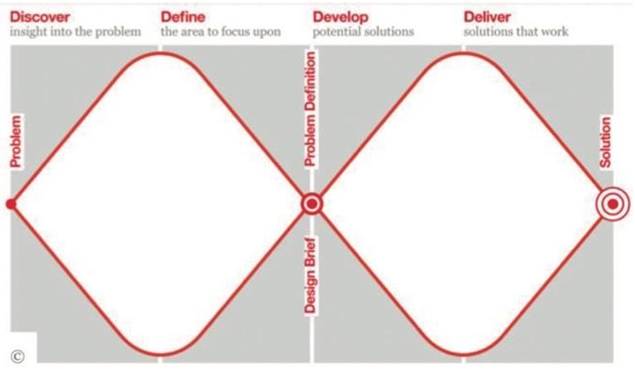
Figure 1: Diagram Double Diamond – description print shop of Design Thinking.
4.2 Aspects ethical
This study was approved by the Research Ethics Committee of the UNIFESP - EPM, under opinion No. 4,226,949, on August 20, 2020 (Appendix 1).
4.3 Application in concepts in Design thinking
4.3.1 Discover
Research was carried out on articulated elbow orthoses made under technique in print 3D in the platforms INPI (Institute National from the Property Industrial), SPACENET (Desk in Patent European), USPTO (Desk in Brands It is patents of the States United), WIPO (World Intellectual Property Organization) and SIPO (Office of Property Intellectual from the Republic of China).
Desk research, a literature review was carried out to obtain information necessary for the development of the instrument. The purpose aimed to serve the target user/audience, that is, people with a disease in the elbow or rehabilitation clinic professionals who will benefit with O instrument.
Revised, without restrictions of time and language, articles in databases data and search engines, books with the intention of establishing and knowing studies already carried out that had as reference the theme of orthoses articulated in elbow.
They were used you next descriptors: "print three-dimensional”, "gadgets orthopedics”, “brackets”, “elbow”, "articulation of elbow", “contract” and “disorders of the joint”.
Descritores traduzidos para língua inglesa: “printing”, “three- dimensional”, “elbow”, “capsular contracture”, “orthoses”, “orthosis”, “brace”, “orthotic devices”, “splints”, “static splints”, “dynamic splints”, “elbow splint” (Tabel 1).

Table 1: Strategy in search of the articles.
A search he was done at platform in search PUBMED It is base in data of MEDLINE and LILACS. Table 1 shows the strategy carried out. After selection of articles, introduced criteria in eligibility.
Criteria in inclusion:
Criteria in no inclusion:
Criteria in exclusion:
Due to the minimal number of publications related to orthoses digitally printed and with the intention of expanding knowledge about this technique in production 3D It is your applications at area doctor, there was need in search additional in articles specific about O theme in one new strategy search, including articles of the last ten years (Table 2).

Table 2: Strategy in search of the articles about print 3D
Five users suffering from articular disease of elbow undergoing joint rehabilitation process to understand your doubts, complaints, behavior, understanding their needs and possible choices, come up with forms of assistance in the treatment, evaluate an instrument to gain mobility, their perspectives and aspirations.
The origin of the patients occurred via the physician's database orthopedist involved at thesis, Alisson Martins Farm Cavalcanti, analyzing patients operated on for elbow injuries that progressed to stiffness articulate, observing compatibility at the study. To the be potentials collaborators of project It is framed us criteria in eligibility, occurred recruitment per convenience, through in contact per email, invitation letter attached. Participants interested in joining the project, received via email: Term in Consent Free It is Enlightened (Appendix 3), for signature after their agreement.
Then, a questionnaire was sent to each participant, through the Google Forms filling tool. There was no need to face-to-face assessment or any displacement, it was free of any cost or need for intervention, there were no tests or procedures, nor risk to health of the same.
Criteria in eligibility of the patients:
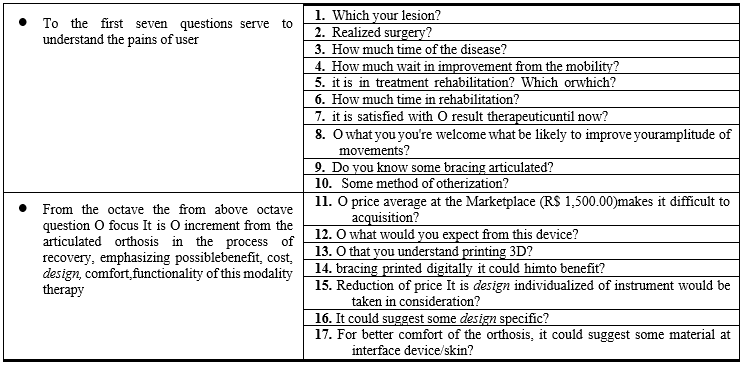
Table 3: Questionnaire sent to the users
4.3.2 To define
To the ideas they were refined, identifying standards for to arrive the conclusions based us data collected (FERREIRA et al., 2015).
Desk survey results and questionnaires were compiled and identified the main problem so that a practical solution could be sought and effective, directed to users.
Desk survey data related to the specific questions to be each group or other considerations were compiled in an Excel spreadsheet containing collected information.
4.3.3 To develop
Search for ideas and prototypes, models and models that was carried out aiming obtaining the best solutions from in group of people.
A selection of professionals was carried out, who were recruited by convenience, via e-mail, with an invitation letter attached. To those interested in collaborate with the project, was sent, by e-mail: Term of Commitment and confidentiality (Appendix two) It is Term in Consent Free It is Enlightened (Appendix 3) for signature after their agreement.
Initially, received questionnaires for analysis, you same containing the questions and answers collected in the Discover Phase, applied to the five users, aiming to understand the pain of patients, process of rehabilitation It is search per solutions.
received invitation The to participate in of project: five orthopedists’ specialists in the shoulder and elbow area, five physiotherapists and five technical in print 3D
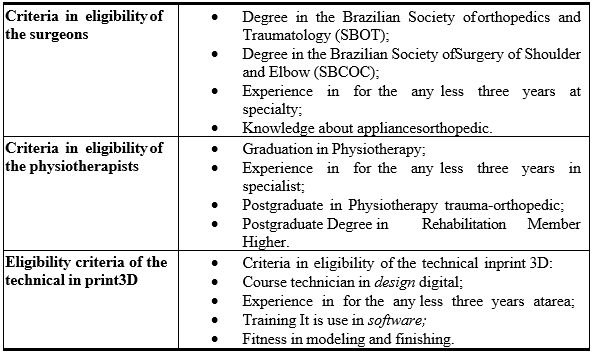
Table 4: Criteria in eligibility of the surgeons, physiotherapists It is technical in print 3D.
Then, a questionnaire was sent to each participating professional. through from the tool Google forms for fill. These they were answered and added to a spreadsheet, generating converging opinions and divergent analyzed in set.
| QUESTIONNAIRE TO ORTHOPEDISTS | QUESTIONNAIRE TO PHYSIOTHERAPISTS | QUIZ TO THE TECHNICAL IN PRINT 3D |
1. Do you have experience in treatment of patients with elbow hard? 2. What is your behavior in relation to patient with joint stiffness of elbow? 3. Realize benefits in use of orthoses articulated? 4. There is limitation for prescription of these gadgets? 5. usually indicate the use of this instrument during the rehabilitation in injuries? 6. Case opts for the use, which your indications? 7. Which principle in preference? Static, static progressive or dynamic? 8. what difficulties found youhe has got that? 9. some specific design preferably? 10. taking in consideration the growing participation of3D printing in practice in health, would you imagine viability in manufacturing from these instruments of this technique? 11. Name some benefits theorists possible. | 1. Do you have experience in rehabilitation process of patients withelbow hard? 2. what difficulties foundin these cases? 3. generally, the evolution usually to besatisfactory? 4. Which O period in recovery average? 5. What is the protocol rehabilitation that you usually use in users with rigidityarticulate elbow? 6. You indicate use ofbracing? 7. Observe benefit in this modality therapy? 8. Which principle in preference? Static, static progressive or dynamic? 9. what difficulties foundyou he has got that? 10. Some specific design of preference? 11. Leading in consideration thegrowing participation of 3D printing in practice of health, would you imagine viability in manufacturing from these instruments of this technique? 12. Name some benefits theorists possible. | 1. You have experience in print 3D at area from the health? 2. What kind of printers do you use? or printing methods? 3. The method brings agility in the appliance production, equipment, inputs? 4. Regarding real estate orthopedics, there is justification for printing use 3D? 5. In front of articulated orthoses (immobilization devices that act at rehabilitation in injuries) and your production needs agile,design and finishes satisfactory. which printer 3D, method,feedstock It is software would you use? 6. The device printedit would have enough resistance to support charge aboutarticulation of the elbow, goal of study? 7. observing changes anatomic in some patients overof treatment, such as: swelling regression and decrease in circumference member, skin friable and sensitive. There is a possibility to adjust the device afterregression of swelling, as well as what kind of material used as protective interface between skin and device? 8. Which hinge option for joint mobilization you advise? 9. Mention advantages and disadvantages the use of this technology in orthopedics, especially in confection in orthoses articulated. |
Table 5: Quiz sent to the orthopedists, physiotherapists It is technical Printing 3D
To the questions, directed Each group in professionals, help at the process of understanding the problem, from different areas of performance, and search for viable solutions with the exercise of options arising from knowledge many different.
After each group to respond your related questionnaires, one session in “brainstorming” in between all you professionals involved he was carried out per through analysis of their responses, already grouped in a spreadsheet, occurring debate, criticism, obtaining in opinions in value, or until solution of the problems (FERREIRA et al., 2015).
A brainstorm was carried out in virtual and live mode, through conference call between all professionals. There was no need to intervention, tests or procedures to employees, without risk to their health.
There was one total in 15 professionals’ participants It is all these Employees included had to sign the Confidentiality Agreement (Appendix 2) and the Informed Consent Form (Appendix 3 and 4).
4.3.4 Deliver
In order to optimize time and money, there was an evaluation of the prototype, identification of problems and suggestions for improvements. It was asked to collaborators of “brainstorming” from the phase "To develop" what evaluate your drawings, sketches and models for making the MVP (Minimum Viable product) It is production theoretical of device, being started process for deposit of patent.
Design proposed from clamps with button connection.
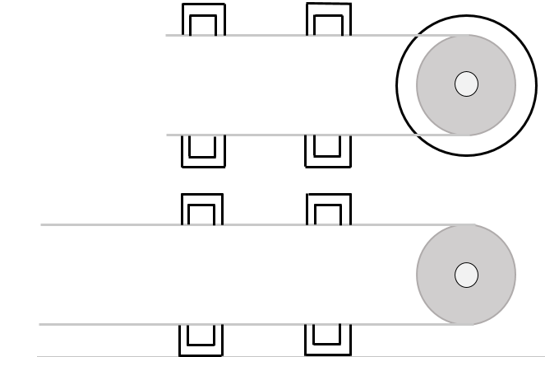
Figure 2: Outline drawn from bracing
5. Results
5.1. Discover
A similar invention object was found on the WIPO platform, registration CN112190380 and one on the ESPACENET platform, registration CN109147042, patents Chinese, at the which they were created devices orthopedics through the digital method of 3D printing, functioning as support for elbow injuries, rotational axis coincident with axis of rotation actual motion and articulated coupling between arm components and forearm.
To the patents they were identified in agreement with The Classification International in Patent (CIP) (Tables 1, 2 and 3).

Frame 1: Patent CN112190380

Frame 2: Patent CN109147042

Frame 3: Patent proposal
A bracing proposal diverge of the models CN112190380 It is CN109147042 for using a 3D scanner on the limb affected by the injury, increasing precision, to possess coupling in between clamps of type Chicago screw , there are lateral and medial hooks to support elastic garters for gain in strength in flexion of elbow It is hooks dorsals It is tunnel centralizer for coupling and directing springs, exerting extension load of elbow, aiming stretching of the fabrics soft It is gain progressive range of motion, not restricted to just immobilization or mobilization without exercise of cargo about articulation.
Differences techniques in between to the orthoses similar It is bracing proposal evidenced at the Frame 4.

Frame 4: Differences in between you model patented CN112190380, CN109147042 and bracing proposal
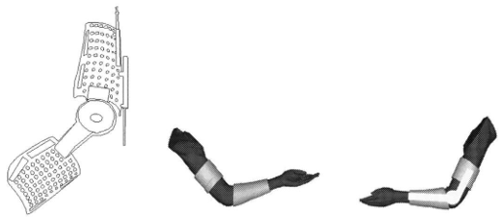
Figure 3: Model patented CN109147042
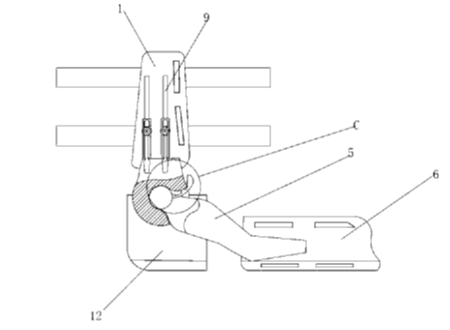
Figure 4: Model Patented CN112190380
O project in patent he was framed at the model in utility, device what will bring improvement functional at manufacturing of the gadgets previous, passable in application industrial, highlighting practicality It is speed of confection. It will have private investment, from companies that aim to innovation of methods immobilization and rehabilitation existing.
Claims:
They were selected 300 articles at the PUBMED It is six at the LILACS. After job of the criteria in inclusion It is no inclusion, they passed the 61 articles for the PUBMED and no article viewed in LILACS. After refinement of search, reading of the titles It is summaries, they were excluded articles no compatible with the theme, leaving 12 articles included in the study, all found at platform PUBMED.
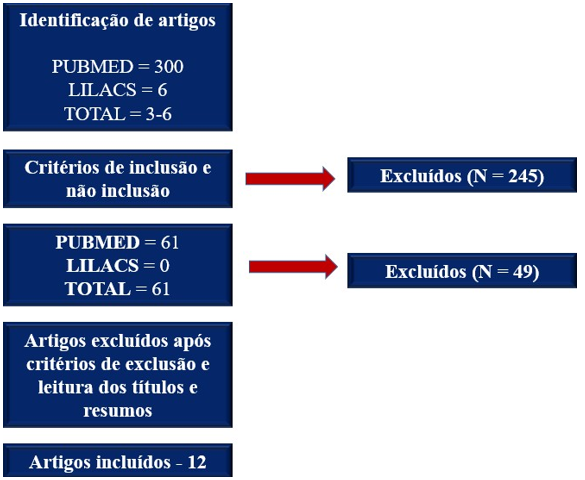
Figure 5: flowchart in identification from the literature
Complementary search results for specific articles on 3D printed orthoses, 95 articles were found in PUBMED and one in LILACS, being selected contents specific in print 3D It is correlation with orthoses. No publications were found containing orthoses of digitally printed elbows, but of other joints, such as ankle, fish, hand It is knee.
At the purpose in to understand to the pains of the patients (public target), patients with lesions that require specific treatment, a questionnaire of 18 questions, subjective and objective, grouping from the understanding in your illness, treatment proposed, result functional objectified, satisfaction current It is knowledge about from the problematic It is technologies what may be introduced.
Application in quiz to the patients:
4. How much waiting for improvement of mobility?
5 answers
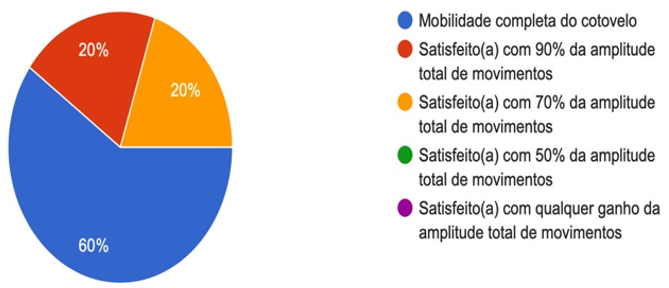
7. it is satisfied with O result therapeutic until O time?
5 answers
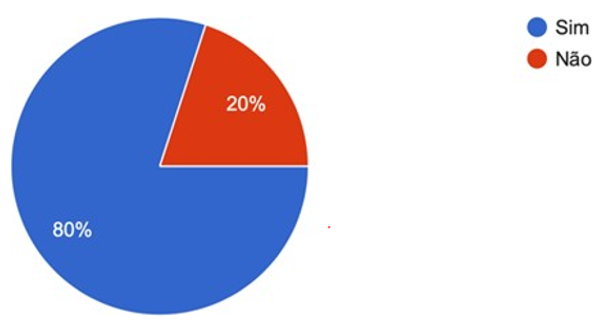
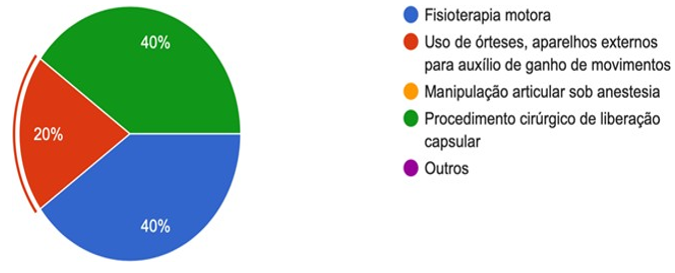
8. O what you you're welcome what be likely to improve your amplitude in movements?
5 answers
9. Do you know some bracing articulated?
5 answers
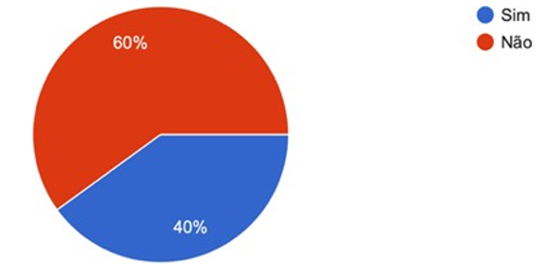
From above question: He was used some method in otherization? Three (60%) replied what Yes, it is two (40%) replied what no.
10. He was used some method in guidance?
5 answers
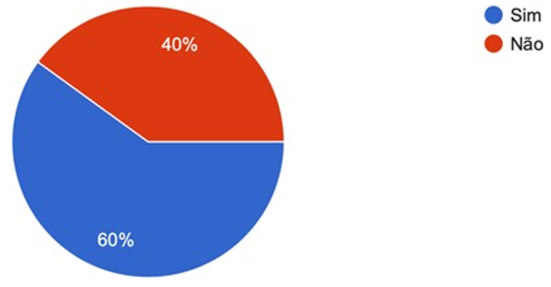
11. O price at the Marketplace (R$ 1,500.00) hinders the acquisition from the bracing?
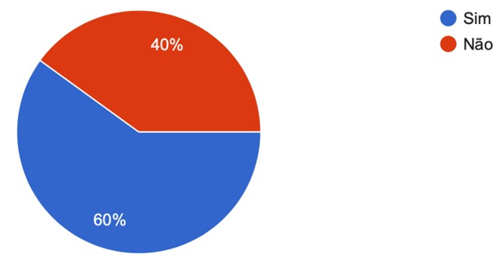
5 answers
5.2 To define
Against of answers provided by the patients, it was observed what all suffered injuries elbow It is were subjected to procedure surgery with disease duration ranging from six months to four years, evolving with the presence of joint stiffness. Everyone expects improvement range of motion and also performed motor physiotherapy with time varying in three months It is quite the three years. Sixty Percent are unaware of any type of articulated orthosis and only 60% of them were submitted to some orthoticization, which can be articulated or not articulated. Sixty Percent of the patients report difficulty in purchase O device at the price currently employed, agreeing that a reduction in price It is design individualized of instrument would be taken in consideration. All expected what O device could to improve the range of motion and believed that production technology technique in print 3D it could benefit them, considering O design It is cost smaller.
5.3 To develop
A leave of answers collected of the patients, understanding your pains, they were applied questionnaires to the professionals selected, aiming construction of device with opinions divergent, areas miscellaneous in knowledge to build a consensual idea rich in information and details that could achieve the creation objective and meet the demands of the users.
5.3.1 Application in quiz to the orthopedists

5. usually indicate the use of that instrument during the rehabilitation of injuries?
5 answers
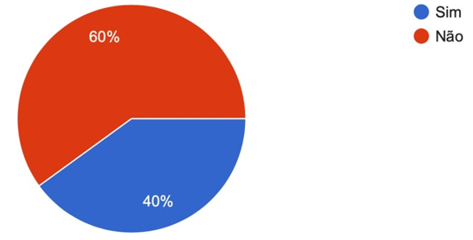
7. Which O principle in preference? Static, static progressive or dynamic?
5 answers
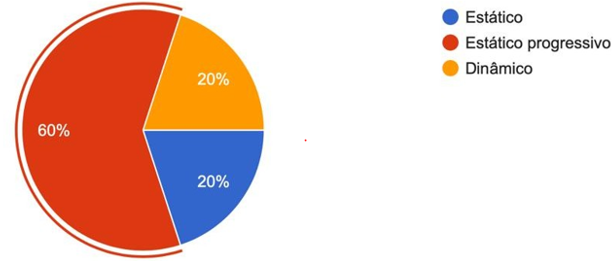
5.3.2 Application in quiz to the physiotherapists
3. Generally The evolution usually to be satisfactory?
5 answers
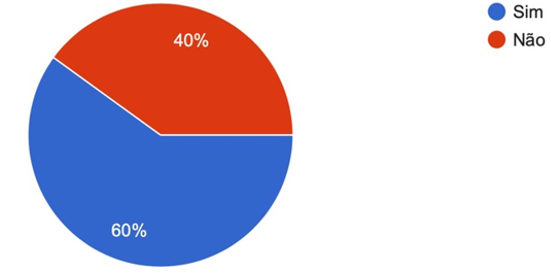
4. Which O period in recovery average?
5 answers
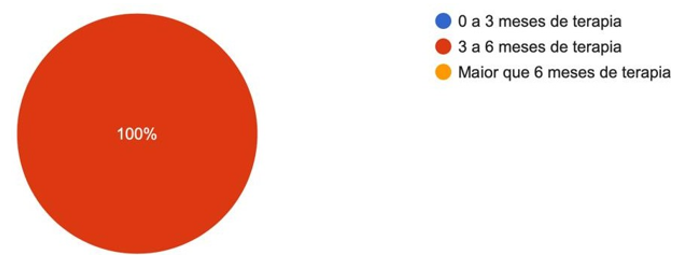
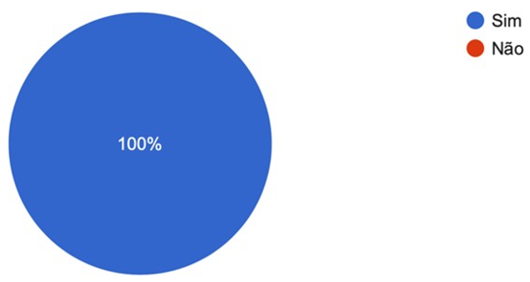
8. Which principle in preference? Static, static progressive or dynamic?
5 answers
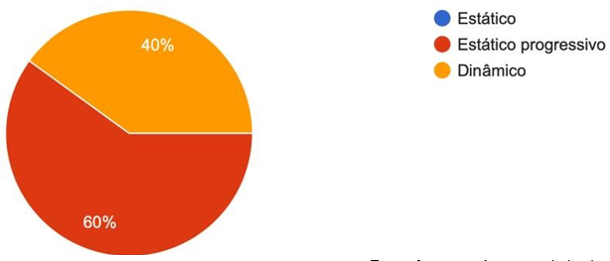
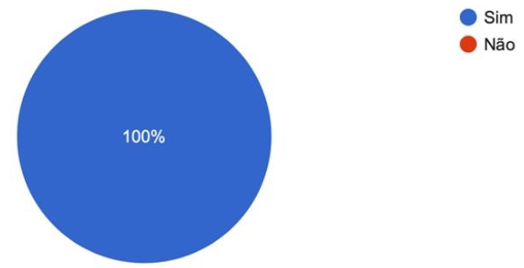
5.3.3 Application in quiz to the professionals in print 3D
1.You he has experience in print 3D at area from the health?
5 answers
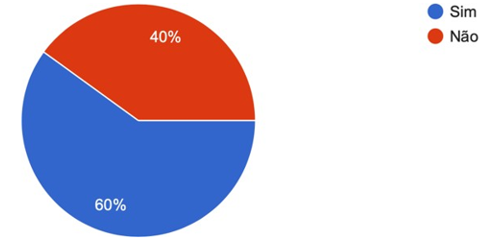
3.O method bring agility at production in gadgets, equipment, inputs?
5 answers
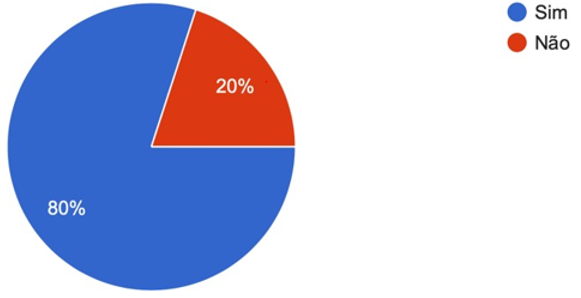
4. In relationship The fixed assets, there is reasoning for use from the print 3D?
5 answers
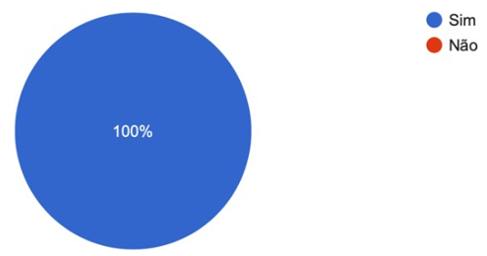
6. O device printed it would have resistance enough for to support charge about articulation of the elbow, objective of the study?
5 answers
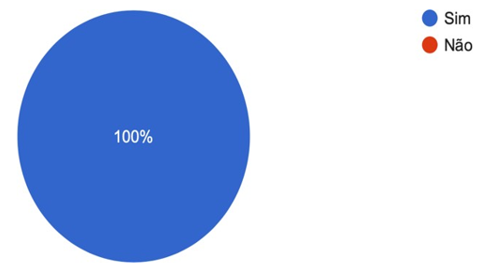
5.3.4 Results of brainstorming
He was carried out meeting in group of the professionals elected as collaborators, per via digital, platform zoom, occurring Preview assessment of answers of the questionnaires of the patients It is of the professionals’ collaborators. Everyone was able to express their opinions for the solution of problems and equalize product doubts, given the varied responses of their individual questionnaires, until there is uniformity of thought and stand out product consistent with basement multidisciplinary. Considered all to the answers performed It is against from the doubt or tiebreaker, in case of no consensus, The majority would prevail.
Chosen preference principle: static progressive, printed by 3D printer type Zmorph vx, method FDM (Fused Deposition Modeling), raw material used: PLA (polylactyl acid). opted for use of 3D scanner to generate reliable limb reconstruction stricken. Software _ in engineering reverse chosen he was GEOMAGIC STUDIO. 3D modeling software chosen was AUTOCAD. Software of slicing chosen he was CURE.
Coupling of parts printed of arm It is forearm, as fitting and hinge would be printed by the printer itself, lock on button with aid in metal (Chicago screw).
Faced with the protective interface between the skin and the device, it was decided too none specific. In cases in hypersensitivity to the PLA, one can use foams or fabrics in cotton, preventing O counted directly with O plastic.
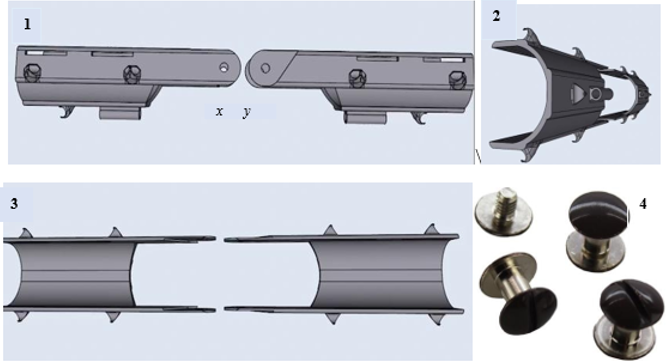
Figure 6: Model produced at the brainstorming, in the visions 1- side, two- dorsal, 3- ventral, 4- Screw Chicago coupled us holes x, y (vision 1).

Figure 7: Vision three-dimensional with It is made in movement
5.4 Deliver
In this phase was sought from assessment of the prototype, identification in problems and suggestions. The collaborators of the “brainstorming” evaluated designs, sketches for production of MVP (Minimum viable Product). Posteriorly, O model it will be delivered for deposit in patent, through of next phases:
The invention relates to the field of orthopedic medical devices for rehabilitation treatment of elbow joint injuries. Accomplished in design digital It is method in print 3D, custom It is individualized in agreement with to the many different anatomies existing at population.
O goal from the invention It is to supply design digital at the method in print 3D, as support custom The anatomy of member higher, Format articulated at the elbow, allowed moves It is providing support extrinsic able in stabilize the articulation, benefiting O patient in the more diverse injuries.
AND Reached O goal by the next means technical:
The reverse engineering software is GEOMAGIC STUDIO. O software modeling and the AUTOCAD.
O software in preprocessing in print 3D is No CURE.
Preferably, the detachable connection structure in the third step is button connection structure and the hinge with lock is structure that can to be adjusted It is locked dynamically.
• Description of the Designs
Figure 8 demonstrates the MVP (outline of the final product), containing clamp adjustable for O arm It is other for O forearm, produced separately the leave of design digital, it is each unit contains two slits for placing in one Velcro adjustable in each, in addition in two hooks side It is medial in each clamp for placing in ribbons elastic with goal of elbow flexion strength. It also contains, a hook and a tunnel centralizer located posteriorly Each clamp for ticket in elastic with purpose of extension force of the joint.
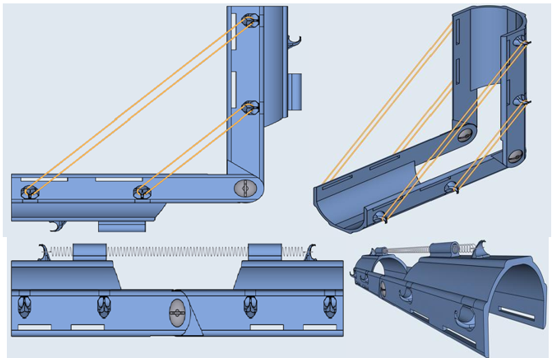
Figure 8: bracing Final with leagues elastic fixed in hooks side, exerting bending force and spring attached to posterior hooks, exerting load in extension
O scanner three-dimensional will get data sent for cloud of member higher, separated per segments proximal It is distal, arm It is forearm, respectively. the scanner 3D The laser no it has radiation, It is your process in collect It is fast It is convenient. You data from the cloud in points they are imported from the reverse engineering software , the profile being digitized triangular contour of the skin, smoothing and modeling properly. A Triangular part of surface is externally thickened to generate model three-dimensional in form in bark in thickness specific It is O model saved at the Format STL. distally, at clamp of arm It is proximally, at the forearm, are visualized bows what will be coupled one to the other as O center in rotation of elbow, providing O spin for The mobility articulate. O file STL It is imported for O software in modeling It is The combination boolean It is design CAD, It is adopted as requirement in design It is O model produced with The structure in hinge added. O file saved O Format STL It is imported for O software in preprocessing in print for to generate file in support It is adjust you parameters in print. Combined you files in model with O in support, It is generated other at the Format STL, being sent The print 3D for originate model in bracing articulated in elbow.
To the to analyze O concept in stiffness articulate, possible causes, gravity of the disorder and response to treatment, one can observe the complexity and diversity in your management. At the moment, news technologies they are being maids for minimize sequels It is to improve function in members compromised, contributing to a better quality of life for patients from the illness.
Assessing you questionnaires of the patients It is your pains, it was possible understand that there were surgical injuries to one elbow of each patient, occurring posterior procedure surgical liquid Paper It is evolution for joint stiffness.
The disease duration was varied, however, all of them were over six months, determining one maturation at healing of collagen It is smaller possibility of functional improvement without a new therapeutic modality (GELINS et al ., 2000).
All demonstrated interest at improvement from the amplitude in movements, some content with full mobility, and others even with mobility partial. A majority of activities from the life daily he can to be carried out with 100° of elbow flexion and 100° of forearm rotation (GELINAS et al ., 2000). A bigger part from them already there was closed O process in rehabilitation physiotherapy. In general, declared be satisfied with O treatment proposed, although as visa previously, all seek clinical improvement. When asked which method could determine gain of movements, 40
"He was produced one model virtual in bracing articulated in elbow by the 3D printing method with technical modifications to the gadgets traditional, making possible new tool for O treatment or prevention of stiff elbow”.
Clearly Auctoresonline and particularly Psychology and Mental Health Care Journal is dedicated to improving health care services for individuals and populations. The editorial boards' ability to efficiently recognize and share the global importance of health literacy with a variety of stakeholders. Auctoresonline publishing platform can be used to facilitate of optimal client-based services and should be added to health care professionals' repertoire of evidence-based health care resources.

Journal of Clinical Cardiology and Cardiovascular Intervention The submission and review process was adequate. However I think that the publication total value should have been enlightened in early fases. Thank you for all.

Journal of Women Health Care and Issues By the present mail, I want to say thank to you and tour colleagues for facilitating my published article. Specially thank you for the peer review process, support from the editorial office. I appreciate positively the quality of your journal.
Journal of Clinical Research and Reports I would be very delighted to submit my testimonial regarding the reviewer board and the editorial office. The reviewer board were accurate and helpful regarding any modifications for my manuscript. And the editorial office were very helpful and supportive in contacting and monitoring with any update and offering help. It was my pleasure to contribute with your promising Journal and I am looking forward for more collaboration.

We would like to thank the Journal of Thoracic Disease and Cardiothoracic Surgery because of the services they provided us for our articles. The peer-review process was done in a very excellent time manner, and the opinions of the reviewers helped us to improve our manuscript further. The editorial office had an outstanding correspondence with us and guided us in many ways. During a hard time of the pandemic that is affecting every one of us tremendously, the editorial office helped us make everything easier for publishing scientific work. Hope for a more scientific relationship with your Journal.

The peer-review process which consisted high quality queries on the paper. I did answer six reviewers’ questions and comments before the paper was accepted. The support from the editorial office is excellent.

Journal of Neuroscience and Neurological Surgery. I had the experience of publishing a research article recently. The whole process was simple from submission to publication. The reviewers made specific and valuable recommendations and corrections that improved the quality of my publication. I strongly recommend this Journal.

Dr. Katarzyna Byczkowska My testimonial covering: "The peer review process is quick and effective. The support from the editorial office is very professional and friendly. Quality of the Clinical Cardiology and Cardiovascular Interventions is scientific and publishes ground-breaking research on cardiology that is useful for other professionals in the field.

Thank you most sincerely, with regard to the support you have given in relation to the reviewing process and the processing of my article entitled "Large Cell Neuroendocrine Carcinoma of The Prostate Gland: A Review and Update" for publication in your esteemed Journal, Journal of Cancer Research and Cellular Therapeutics". The editorial team has been very supportive.

Testimony of Journal of Clinical Otorhinolaryngology: work with your Reviews has been a educational and constructive experience. The editorial office were very helpful and supportive. It was a pleasure to contribute to your Journal.

Dr. Bernard Terkimbi Utoo, I am happy to publish my scientific work in Journal of Women Health Care and Issues (JWHCI). The manuscript submission was seamless and peer review process was top notch. I was amazed that 4 reviewers worked on the manuscript which made it a highly technical, standard and excellent quality paper. I appreciate the format and consideration for the APC as well as the speed of publication. It is my pleasure to continue with this scientific relationship with the esteem JWHCI.

This is an acknowledgment for peer reviewers, editorial board of Journal of Clinical Research and Reports. They show a lot of consideration for us as publishers for our research article “Evaluation of the different factors associated with side effects of COVID-19 vaccination on medical students, Mutah university, Al-Karak, Jordan”, in a very professional and easy way. This journal is one of outstanding medical journal.
Dear Hao Jiang, to Journal of Nutrition and Food Processing We greatly appreciate the efficient, professional and rapid processing of our paper by your team. If there is anything else we should do, please do not hesitate to let us know. On behalf of my co-authors, we would like to express our great appreciation to editor and reviewers.

As an author who has recently published in the journal "Brain and Neurological Disorders". I am delighted to provide a testimonial on the peer review process, editorial office support, and the overall quality of the journal. The peer review process at Brain and Neurological Disorders is rigorous and meticulous, ensuring that only high-quality, evidence-based research is published. The reviewers are experts in their fields, and their comments and suggestions were constructive and helped improve the quality of my manuscript. The review process was timely and efficient, with clear communication from the editorial office at each stage. The support from the editorial office was exceptional throughout the entire process. The editorial staff was responsive, professional, and always willing to help. They provided valuable guidance on formatting, structure, and ethical considerations, making the submission process seamless. Moreover, they kept me informed about the status of my manuscript and provided timely updates, which made the process less stressful. The journal Brain and Neurological Disorders is of the highest quality, with a strong focus on publishing cutting-edge research in the field of neurology. The articles published in this journal are well-researched, rigorously peer-reviewed, and written by experts in the field. The journal maintains high standards, ensuring that readers are provided with the most up-to-date and reliable information on brain and neurological disorders. In conclusion, I had a wonderful experience publishing in Brain and Neurological Disorders. The peer review process was thorough, the editorial office provided exceptional support, and the journal's quality is second to none. I would highly recommend this journal to any researcher working in the field of neurology and brain disorders.

Dear Agrippa Hilda, Journal of Neuroscience and Neurological Surgery, Editorial Coordinator, I trust this message finds you well. I want to extend my appreciation for considering my article for publication in your esteemed journal. I am pleased to provide a testimonial regarding the peer review process and the support received from your editorial office. The peer review process for my paper was carried out in a highly professional and thorough manner. The feedback and comments provided by the authors were constructive and very useful in improving the quality of the manuscript. This rigorous assessment process undoubtedly contributes to the high standards maintained by your journal.

International Journal of Clinical Case Reports and Reviews. I strongly recommend to consider submitting your work to this high-quality journal. The support and availability of the Editorial staff is outstanding and the review process was both efficient and rigorous.

Thank you very much for publishing my Research Article titled “Comparing Treatment Outcome Of Allergic Rhinitis Patients After Using Fluticasone Nasal Spray And Nasal Douching" in the Journal of Clinical Otorhinolaryngology. As Medical Professionals we are immensely benefited from study of various informative Articles and Papers published in this high quality Journal. I look forward to enriching my knowledge by regular study of the Journal and contribute my future work in the field of ENT through the Journal for use by the medical fraternity. The support from the Editorial office was excellent and very prompt. I also welcome the comments received from the readers of my Research Article.

Dear Erica Kelsey, Editorial Coordinator of Cancer Research and Cellular Therapeutics Our team is very satisfied with the processing of our paper by your journal. That was fast, efficient, rigorous, but without unnecessary complications. We appreciated the very short time between the submission of the paper and its publication on line on your site.

I am very glad to say that the peer review process is very successful and fast and support from the Editorial Office. Therefore, I would like to continue our scientific relationship for a long time. And I especially thank you for your kindly attention towards my article. Have a good day!

"We recently published an article entitled “Influence of beta-Cyclodextrins upon the Degradation of Carbofuran Derivatives under Alkaline Conditions" in the Journal of “Pesticides and Biofertilizers” to show that the cyclodextrins protect the carbamates increasing their half-life time in the presence of basic conditions This will be very helpful to understand carbofuran behaviour in the analytical, agro-environmental and food areas. We greatly appreciated the interaction with the editor and the editorial team; we were particularly well accompanied during the course of the revision process, since all various steps towards publication were short and without delay".

I would like to express my gratitude towards you process of article review and submission. I found this to be very fair and expedient. Your follow up has been excellent. I have many publications in national and international journal and your process has been one of the best so far. Keep up the great work.

We are grateful for this opportunity to provide a glowing recommendation to the Journal of Psychiatry and Psychotherapy. We found that the editorial team were very supportive, helpful, kept us abreast of timelines and over all very professional in nature. The peer review process was rigorous, efficient and constructive that really enhanced our article submission. The experience with this journal remains one of our best ever and we look forward to providing future submissions in the near future.

I am very pleased to serve as EBM of the journal, I hope many years of my experience in stem cells can help the journal from one way or another. As we know, stem cells hold great potential for regenerative medicine, which are mostly used to promote the repair response of diseased, dysfunctional or injured tissue using stem cells or their derivatives. I think Stem Cell Research and Therapeutics International is a great platform to publish and share the understanding towards the biology and translational or clinical application of stem cells.

I would like to give my testimony in the support I have got by the peer review process and to support the editorial office where they were of asset to support young author like me to be encouraged to publish their work in your respected journal and globalize and share knowledge across the globe. I really give my great gratitude to your journal and the peer review including the editorial office.

I am delighted to publish our manuscript entitled "A Perspective on Cocaine Induced Stroke - Its Mechanisms and Management" in the Journal of Neuroscience and Neurological Surgery. The peer review process, support from the editorial office, and quality of the journal are excellent. The manuscripts published are of high quality and of excellent scientific value. I recommend this journal very much to colleagues.

Dr.Tania Muñoz, My experience as researcher and author of a review article in The Journal Clinical Cardiology and Interventions has been very enriching and stimulating. The editorial team is excellent, performs its work with absolute responsibility and delivery. They are proactive, dynamic and receptive to all proposals. Supporting at all times the vast universe of authors who choose them as an option for publication. The team of review specialists, members of the editorial board, are brilliant professionals, with remarkable performance in medical research and scientific methodology. Together they form a frontline team that consolidates the JCCI as a magnificent option for the publication and review of high-level medical articles and broad collective interest. I am honored to be able to share my review article and open to receive all your comments.

“The peer review process of JPMHC is quick and effective. Authors are benefited by good and professional reviewers with huge experience in the field of psychology and mental health. The support from the editorial office is very professional. People to contact to are friendly and happy to help and assist any query authors might have. Quality of the Journal is scientific and publishes ground-breaking research on mental health that is useful for other professionals in the field”.

Dear editorial department: On behalf of our team, I hereby certify the reliability and superiority of the International Journal of Clinical Case Reports and Reviews in the peer review process, editorial support, and journal quality. Firstly, the peer review process of the International Journal of Clinical Case Reports and Reviews is rigorous, fair, transparent, fast, and of high quality. The editorial department invites experts from relevant fields as anonymous reviewers to review all submitted manuscripts. These experts have rich academic backgrounds and experience, and can accurately evaluate the academic quality, originality, and suitability of manuscripts. The editorial department is committed to ensuring the rigor of the peer review process, while also making every effort to ensure a fast review cycle to meet the needs of authors and the academic community. Secondly, the editorial team of the International Journal of Clinical Case Reports and Reviews is composed of a group of senior scholars and professionals with rich experience and professional knowledge in related fields. The editorial department is committed to assisting authors in improving their manuscripts, ensuring their academic accuracy, clarity, and completeness. Editors actively collaborate with authors, providing useful suggestions and feedback to promote the improvement and development of the manuscript. We believe that the support of the editorial department is one of the key factors in ensuring the quality of the journal. Finally, the International Journal of Clinical Case Reports and Reviews is renowned for its high- quality articles and strict academic standards. The editorial department is committed to publishing innovative and academically valuable research results to promote the development and progress of related fields. The International Journal of Clinical Case Reports and Reviews is reasonably priced and ensures excellent service and quality ratio, allowing authors to obtain high-level academic publishing opportunities in an affordable manner. I hereby solemnly declare that the International Journal of Clinical Case Reports and Reviews has a high level of credibility and superiority in terms of peer review process, editorial support, reasonable fees, and journal quality. Sincerely, Rui Tao.

Clinical Cardiology and Cardiovascular Interventions I testity the covering of the peer review process, support from the editorial office, and quality of the journal.

Clinical Cardiology and Cardiovascular Interventions, we deeply appreciate the interest shown in our work and its publication. It has been a true pleasure to collaborate with you. The peer review process, as well as the support provided by the editorial office, have been exceptional, and the quality of the journal is very high, which was a determining factor in our decision to publish with you.
The peer reviewers process is quick and effective, the supports from editorial office is excellent, the quality of journal is high. I would like to collabroate with Internatioanl journal of Clinical Case Reports and Reviews journal clinically in the future time.

Clinical Cardiology and Cardiovascular Interventions, I would like to express my sincerest gratitude for the trust placed in our team for the publication in your journal. It has been a true pleasure to collaborate with you on this project. I am pleased to inform you that both the peer review process and the attention from the editorial coordination have been excellent. Your team has worked with dedication and professionalism to ensure that your publication meets the highest standards of quality. We are confident that this collaboration will result in mutual success, and we are eager to see the fruits of this shared effort.

Dear Dr. Jessica Magne, Editorial Coordinator 0f Clinical Cardiology and Cardiovascular Interventions, I hope this message finds you well. I want to express my utmost gratitude for your excellent work and for the dedication and speed in the publication process of my article titled "Navigating Innovation: Qualitative Insights on Using Technology for Health Education in Acute Coronary Syndrome Patients." I am very satisfied with the peer review process, the support from the editorial office, and the quality of the journal. I hope we can maintain our scientific relationship in the long term.
Dear Monica Gissare, - Editorial Coordinator of Nutrition and Food Processing. ¨My testimony with you is truly professional, with a positive response regarding the follow-up of the article and its review, you took into account my qualities and the importance of the topic¨.

Dear Dr. Jessica Magne, Editorial Coordinator 0f Clinical Cardiology and Cardiovascular Interventions, The review process for the article “The Handling of Anti-aggregants and Anticoagulants in the Oncologic Heart Patient Submitted to Surgery” was extremely rigorous and detailed. From the initial submission to the final acceptance, the editorial team at the “Journal of Clinical Cardiology and Cardiovascular Interventions” demonstrated a high level of professionalism and dedication. The reviewers provided constructive and detailed feedback, which was essential for improving the quality of our work. Communication was always clear and efficient, ensuring that all our questions were promptly addressed. The quality of the “Journal of Clinical Cardiology and Cardiovascular Interventions” is undeniable. It is a peer-reviewed, open-access publication dedicated exclusively to disseminating high-quality research in the field of clinical cardiology and cardiovascular interventions. The journal's impact factor is currently under evaluation, and it is indexed in reputable databases, which further reinforces its credibility and relevance in the scientific field. I highly recommend this journal to researchers looking for a reputable platform to publish their studies.

Dear Editorial Coordinator of the Journal of Nutrition and Food Processing! "I would like to thank the Journal of Nutrition and Food Processing for including and publishing my article. The peer review process was very quick, movement and precise. The Editorial Board has done an extremely conscientious job with much help, valuable comments and advices. I find the journal very valuable from a professional point of view, thank you very much for allowing me to be part of it and I would like to participate in the future!”

Dealing with The Journal of Neurology and Neurological Surgery was very smooth and comprehensive. The office staff took time to address my needs and the response from editors and the office was prompt and fair. I certainly hope to publish with this journal again.Their professionalism is apparent and more than satisfactory. Susan Weiner

My Testimonial Covering as fellowing: Lin-Show Chin. The peer reviewers process is quick and effective, the supports from editorial office is excellent, the quality of journal is high. I would like to collabroate with Internatioanl journal of Clinical Case Reports and Reviews.

My experience publishing in Psychology and Mental Health Care was exceptional. The peer review process was rigorous and constructive, with reviewers providing valuable insights that helped enhance the quality of our work. The editorial team was highly supportive and responsive, making the submission process smooth and efficient. The journal's commitment to high standards and academic rigor makes it a respected platform for quality research. I am grateful for the opportunity to publish in such a reputable journal.
My experience publishing in International Journal of Clinical Case Reports and Reviews was exceptional. I Come forth to Provide a Testimonial Covering the Peer Review Process and the editorial office for the Professional and Impartial Evaluation of the Manuscript.

I would like to offer my testimony in the support. I have received through the peer review process and support the editorial office where they are to support young authors like me, encourage them to publish their work in your esteemed journals, and globalize and share knowledge globally. I really appreciate your journal, peer review, and editorial office.
Dear Agrippa Hilda- Editorial Coordinator of Journal of Neuroscience and Neurological Surgery, "The peer review process was very quick and of high quality, which can also be seen in the articles in the journal. The collaboration with the editorial office was very good."

I would like to express my sincere gratitude for the support and efficiency provided by the editorial office throughout the publication process of my article, “Delayed Vulvar Metastases from Rectal Carcinoma: A Case Report.” I greatly appreciate the assistance and guidance I received from your team, which made the entire process smooth and efficient. The peer review process was thorough and constructive, contributing to the overall quality of the final article. I am very grateful for the high level of professionalism and commitment shown by the editorial staff, and I look forward to maintaining a long-term collaboration with the International Journal of Clinical Case Reports and Reviews.
To Dear Erin Aust, I would like to express my heartfelt appreciation for the opportunity to have my work published in this esteemed journal. The entire publication process was smooth and well-organized, and I am extremely satisfied with the final result. The Editorial Team demonstrated the utmost professionalism, providing prompt and insightful feedback throughout the review process. Their clear communication and constructive suggestions were invaluable in enhancing my manuscript, and their meticulous attention to detail and dedication to quality are truly commendable. Additionally, the support from the Editorial Office was exceptional. From the initial submission to the final publication, I was guided through every step of the process with great care and professionalism. The team's responsiveness and assistance made the entire experience both easy and stress-free. I am also deeply impressed by the quality and reputation of the journal. It is an honor to have my research featured in such a respected publication, and I am confident that it will make a meaningful contribution to the field.

"I am grateful for the opportunity of contributing to [International Journal of Clinical Case Reports and Reviews] and for the rigorous review process that enhances the quality of research published in your esteemed journal. I sincerely appreciate the time and effort of your team who have dedicatedly helped me in improvising changes and modifying my manuscript. The insightful comments and constructive feedback provided have been invaluable in refining and strengthening my work".

I thank the ‘Journal of Clinical Research and Reports’ for accepting this article for publication. This is a rigorously peer reviewed journal which is on all major global scientific data bases. I note the review process was prompt, thorough and professionally critical. It gave us an insight into a number of important scientific/statistical issues. The review prompted us to review the relevant literature again and look at the limitations of the study. The peer reviewers were open, clear in the instructions and the editorial team was very prompt in their communication. This journal certainly publishes quality research articles. I would recommend the journal for any future publications.

Dear Jessica Magne, with gratitude for the joint work. Fast process of receiving and processing the submitted scientific materials in “Clinical Cardiology and Cardiovascular Interventions”. High level of competence of the editors with clear and correct recommendations and ideas for enriching the article.

We found the peer review process quick and positive in its input. The support from the editorial officer has been very agile, always with the intention of improving the article and taking into account our subsequent corrections.

My article, titled 'No Way Out of the Smartphone Epidemic Without Considering the Insights of Brain Research,' has been republished in the International Journal of Clinical Case Reports and Reviews. The review process was seamless and professional, with the editors being both friendly and supportive. I am deeply grateful for their efforts.
To Dear Erin Aust – Editorial Coordinator of Journal of General Medicine and Clinical Practice! I declare that I am absolutely satisfied with your work carried out with great competence in following the manuscript during the various stages from its receipt, during the revision process to the final acceptance for publication. Thank Prof. Elvira Farina

Dear Jessica, and the super professional team of the ‘Clinical Cardiology and Cardiovascular Interventions’ I am sincerely grateful to the coordinated work of the journal team for the no problem with the submission of my manuscript: “Cardiometabolic Disorders in A Pregnant Woman with Severe Preeclampsia on the Background of Morbid Obesity (Case Report).” The review process by 5 experts was fast, and the comments were professional, which made it more specific and academic, and the process of publication and presentation of the article was excellent. I recommend that my colleagues publish articles in this journal, and I am interested in further scientific cooperation. Sincerely and best wishes, Dr. Oleg Golyanovskiy.

Dear Ashley Rosa, Editorial Coordinator of the journal - Psychology and Mental Health Care. " The process of obtaining publication of my article in the Psychology and Mental Health Journal was positive in all areas. The peer review process resulted in a number of valuable comments, the editorial process was collaborative and timely, and the quality of this journal has been quickly noticed, resulting in alternative journals contacting me to publish with them." Warm regards, Susan Anne Smith, PhD. Australian Breastfeeding Association.

Dear Jessica Magne, Editorial Coordinator, Clinical Cardiology and Cardiovascular Interventions, Auctores Publishing LLC. I appreciate the journal (JCCI) editorial office support, the entire team leads were always ready to help, not only on technical front but also on thorough process. Also, I should thank dear reviewers’ attention to detail and creative approach to teach me and bring new insights by their comments. Surely, more discussions and introduction of other hemodynamic devices would provide better prevention and management of shock states. Your efforts and dedication in presenting educational materials in this journal are commendable. Best wishes from, Farahnaz Fallahian.
Dear Maria Emerson, Editorial Coordinator, International Journal of Clinical Case Reports and Reviews, Auctores Publishing LLC. I am delighted to have published our manuscript, "Acute Colonic Pseudo-Obstruction (ACPO): A rare but serious complication following caesarean section." I want to thank the editorial team, especially Maria Emerson, for their prompt review of the manuscript, quick responses to queries, and overall support. Yours sincerely Dr. Victor Olagundoye.

Dear Ashley Rosa, Editorial Coordinator, International Journal of Clinical Case Reports and Reviews. Many thanks for publishing this manuscript after I lost confidence the editors were most helpful, more than other journals Best wishes from, Susan Anne Smith, PhD. Australian Breastfeeding Association.

Dear Agrippa Hilda, Editorial Coordinator, Journal of Neuroscience and Neurological Surgery. The entire process including article submission, review, revision, and publication was extremely easy. The journal editor was prompt and helpful, and the reviewers contributed to the quality of the paper. Thank you so much! Eric Nussbaum, MD
Dr Hala Al Shaikh This is to acknowledge that the peer review process for the article ’ A Novel Gnrh1 Gene Mutation in Four Omani Male Siblings, Presentation and Management ’ sent to the International Journal of Clinical Case Reports and Reviews was quick and smooth. The editorial office was prompt with easy communication.

Dear Erin Aust, Editorial Coordinator, Journal of General Medicine and Clinical Practice. We are pleased to share our experience with the “Journal of General Medicine and Clinical Practice”, following the successful publication of our article. The peer review process was thorough and constructive, helping to improve the clarity and quality of the manuscript. We are especially thankful to Ms. Erin Aust, the Editorial Coordinator, for her prompt communication and continuous support throughout the process. Her professionalism ensured a smooth and efficient publication experience. The journal upholds high editorial standards, and we highly recommend it to fellow researchers seeking a credible platform for their work. Best wishes By, Dr. Rakhi Mishra.

Dear Jessica Magne, Editorial Coordinator, Clinical Cardiology and Cardiovascular Interventions, Auctores Publishing LLC. The peer review process of the journal of Clinical Cardiology and Cardiovascular Interventions was excellent and fast, as was the support of the editorial office and the quality of the journal. Kind regards Walter F. Riesen Prof. Dr. Dr. h.c. Walter F. Riesen.

Dear Ashley Rosa, Editorial Coordinator, International Journal of Clinical Case Reports and Reviews, Auctores Publishing LLC. Thank you for publishing our article, Exploring Clozapine's Efficacy in Managing Aggression: A Multiple Single-Case Study in Forensic Psychiatry in the international journal of clinical case reports and reviews. We found the peer review process very professional and efficient. The comments were constructive, and the whole process was efficient. On behalf of the co-authors, I would like to thank you for publishing this article. With regards, Dr. Jelle R. Lettinga.

Dear Clarissa Eric, Editorial Coordinator, Journal of Clinical Case Reports and Studies, I would like to express my deep admiration for the exceptional professionalism demonstrated by your journal. I am thoroughly impressed by the speed of the editorial process, the substantive and insightful reviews, and the meticulous preparation of the manuscript for publication. Additionally, I greatly appreciate the courteous and immediate responses from your editorial office to all my inquiries. Best Regards, Dariusz Ziora

Dear Chrystine Mejia, Editorial Coordinator, Journal of Neurodegeneration and Neurorehabilitation, Auctores Publishing LLC, We would like to thank the editorial team for the smooth and high-quality communication leading up to the publication of our article in the Journal of Neurodegeneration and Neurorehabilitation. The reviewers have extensive knowledge in the field, and their relevant questions helped to add value to our publication. Kind regards, Dr. Ravi Shrivastava.

Dear Clarissa Eric, Editorial Coordinator, Journal of Clinical Case Reports and Studies, Auctores Publishing LLC, USA Office: +1-(302)-520-2644. I would like to express my sincere appreciation for the efficient and professional handling of my case report by the ‘Journal of Clinical Case Reports and Studies’. The peer review process was not only fast but also highly constructive—the reviewers’ comments were clear, relevant, and greatly helped me improve the quality and clarity of my manuscript. I also received excellent support from the editorial office throughout the process. Communication was smooth and timely, and I felt well guided at every stage, from submission to publication. The overall quality and rigor of the journal are truly commendable. I am pleased to have published my work with Journal of Clinical Case Reports and Studies, and I look forward to future opportunities for collaboration. Sincerely, Aline Tollet, UCLouvain.

Dear Ms. Mayra Duenas, Editorial Coordinator, International Journal of Clinical Case Reports and Reviews. “The International Journal of Clinical Case Reports and Reviews represented the “ideal house” to share with the research community a first experience with the use of the Simeox device for speech rehabilitation. High scientific reputation and attractive website communication were first determinants for the selection of this Journal, and the following submission process exceeded expectations: fast but highly professional peer review, great support by the editorial office, elegant graphic layout. Exactly what a dynamic research team - also composed by allied professionals - needs!" From, Chiara Beccaluva, PT - Italy.

Dear Maria Emerson, Editorial Coordinator, we have deeply appreciated the professionalism demonstrated by the International Journal of Clinical Case Reports and Reviews. The reviewers have extensive knowledge of our field and have been very efficient and fast in supporting the process. I am really looking forward to further collaboration. Thanks. Best regards, Dr. Claudio Ligresti